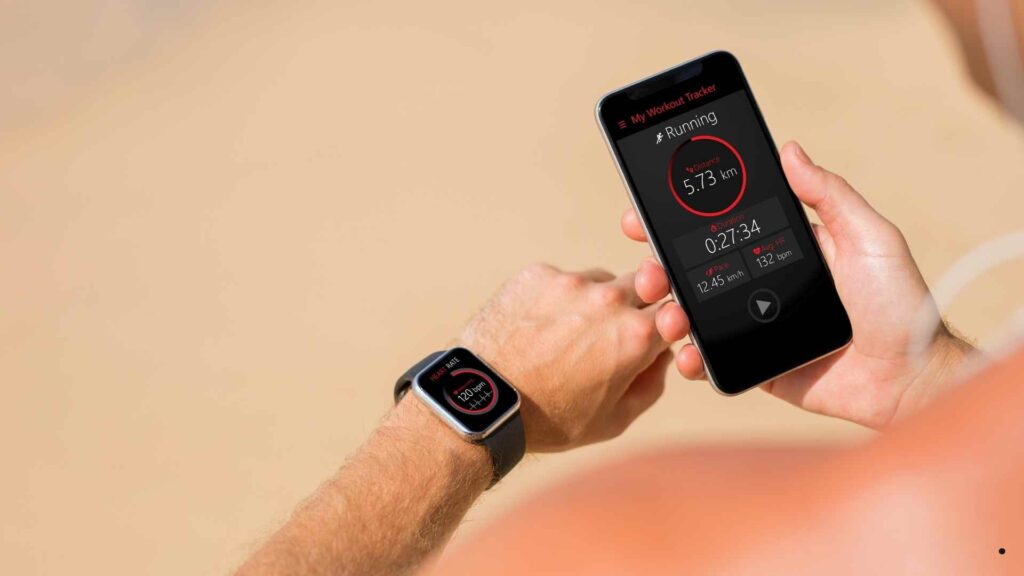how to Track Fitness Progress Effectively: Fitness is not just a goal; it’s a journey. Whether you are a beginner or a seasoned fitness enthusiast, tracking your progress is crucial to staying motivated and achieving your goals. In India, where fitness awareness is growing rapidly, people are increasingly looking for effective ways to monitor their fitness journey. This article will guide you on how to track fitness progress effectively, covering all aspects of fitness tracking, including weight loss, muscle gain, endurance, and overall health. We’ll also address some common FAQs to help you stay on track.
Table of Contents
1. Why is Tracking Fitness Progress Important?
Tracking your fitness progress is like having a roadmap for your journey. It helps you understand where you started, how far you’ve come, and what adjustments you need to make to reach your goals. Here are some reasons why tracking is essential:
- Motivation: Seeing progress, even small improvements, can keep you motivated.
- Accountability: Tracking holds you accountable for your actions and decisions.
- Goal Setting: It helps you set realistic and achievable goals.
- Identifying Patterns: You can identify what works and what doesn’t for your body.
- Preventing Plateaus: Regular tracking helps you avoid fitness plateaus by making necessary changes to your routine.
2. Setting Realistic Fitness Goals
Before you start tracking, it’s important to set clear and realistic fitness goals. Whether you want to lose weight, build muscle, or improve endurance, your goals should follow the SMART principle:
- Specific: Define what you want to achieve.
- Measurable: Ensure you can track your progress.
- Achievable: Set goals that are within your reach.
- Relevant: Align your goals with your overall fitness vision.
- Time-bound: Set a deadline for achieving your goals.
For example, instead of saying, “I want to lose weight,” set a goal like, “I want to lose 5 kg in 3 months by following a balanced diet and exercising 5 days a week.”
3. Key Metrics to Track Your Fitness Progress

To track your fitness progress effectively, you need to focus on multiple metrics. Here are the key areas to monitor:
a) Body Weight and Composition
- Body Weight: Track your weight weekly using a reliable scale. However, don’t rely solely on weight, as it doesn’t account for muscle gain or fat loss.
- Body Fat Percentage: Use a body fat analyzer or consult a professional to measure your body fat percentage.
- Waist and Hip Measurements: Use a measuring tape to track changes in your waist and hip circumference.
b) Strength and Endurance
- Lifting Progress: Track the weights you lift for different exercises (e.g., squats, bench press).
- Repetitions and Sets: Monitor how many reps and sets you can perform for each exercise.
- Endurance Levels: Measure how long you can perform cardio activities like running, cycling, or swimming.
c) Flexibility and Mobility
- Stretching Progress: Track how far you can stretch in exercises like toe touches or splits.
- Range of Motion: Monitor improvements in your joint mobility and flexibility.
d) Cardiovascular Health
- Resting Heart Rate: A lower resting heart rate indicates improved cardiovascular health.
- VO2 Max: This measures your body’s ability to use oxygen during exercise. Many fitness trackers provide this metric.
e) Mental Well-being
- Mood and Energy Levels: Keep a journal to note how you feel mentally and emotionally.
- Sleep Quality: Track your sleep patterns using a wearable or a sleep diary.
4. Tools and Methods to Track Fitness Progress
There are several tools and methods available to help you track your fitness progress effectively. Here are some popular options:
a) Fitness Apps and Wearables
- Fitness Apps: Apps like MyFitnessPal, Fitbit, and HealthifyMe help you track calories, workouts, and progress.
- Wearables: Devices like smartwatches (e.g., Apple Watch, Fitbit) monitor heart rate, steps, sleep, and more.
b) Journaling and Manual Tracking
- Fitness Journal: Maintain a diary to log your workouts, diet, and progress.
- Spreadsheets: Use Excel or Google Sheets to create a customized fitness tracker.
c) Progress Photos and Measurements
- Photos: Take monthly progress photos from different angles to visually track changes.
- Measurements: Use a measuring tape to track changes in your chest, waist, hips, arms, and thighs.
d) Professional Assessments
- Gym Trainers: Consult a trainer for regular assessments and guidance.
- Medical Check-ups: Get regular health check-ups to monitor parameters like cholesterol, blood pressure, and blood sugar levels.
5. Common Mistakes to Avoid While Tracking Progress
While tracking your fitness progress, avoid these common mistakes:
- Over-relying on the Scale: Weight fluctuates daily due to water retention, muscle gain, etc.
- Ignoring Non-Scale Victories: Celebrate improvements in energy levels, mood, and clothing fit.
- Comparing Yourself to Others: Everyone’s fitness journey is unique.
- Not Being Consistent: Track your progress regularly to get accurate results.
- Setting Unrealistic Expectations: Progress takes time, so be patient.
6. How to Stay Motivated During Your Fitness Journey
Staying motivated is key to achieving your fitness goals. Here are some tips:
- Celebrate Small Wins: Acknowledge every milestone, no matter how small.
- Find a Workout Buddy: Exercising with a friend can make the journey more enjoyable.
- Mix Up Your Routine: Try new workouts to keep things interesting.
- Reward Yourself: Treat yourself to something you enjoy after achieving a goal.
- Stay Positive: Focus on progress, not perfection.
FAQs: how to Track Fitness Progress Effectively
Q1. How often should I track my fitness progress?
A: It depends on your goals. For weight loss, track your weight weekly. For strength training, track your lifts every 2-4 weeks. Avoid daily tracking, as it can lead to frustration due to natural fluctuations.
Q2. Can I track progress without a gym membership?
A: Yes, you can track progress at home using bodyweight exercises, progress photos, and measurements. Fitness apps and wearables can also help.
Q3. What should I do if I’m not seeing progress?
A: Reassess your diet, workout routine, and sleep patterns. Consider consulting a fitness professional for guidance.
Q4. Is it necessary to take progress photos?
A: Progress photos are highly recommended as they provide a visual record of your transformation, which the scale might not show.
Q5. How do I track mental well-being?
A: Maintain a journal to note your mood, energy levels, and sleep quality. Meditation and mindfulness practices can also help.
Q6. Can I rely solely on fitness apps?
A: While fitness apps are helpful, combining them with manual tracking and professional assessments provides a more comprehensive view.
8. Conclusion
Tracking your fitness progress is an essential part of achieving your health and fitness goals. By setting realistic goals, monitoring key metrics, and using the right tools, you can stay on track and motivated throughout your journey. Remember, fitness is not just about physical appearance; it’s about overall well-being. Celebrate every small victory, stay consistent, and enjoy the process. Whether you’re aiming to lose weight, build muscle, or improve your endurance, effective tracking will help you get there.
So, start today! Grab a journal, download a fitness app, or consult a trainer, and take the first step towards a healthier, fitter you. Remember, the journey of a thousand miles begins with a single step. Happy tracking!

